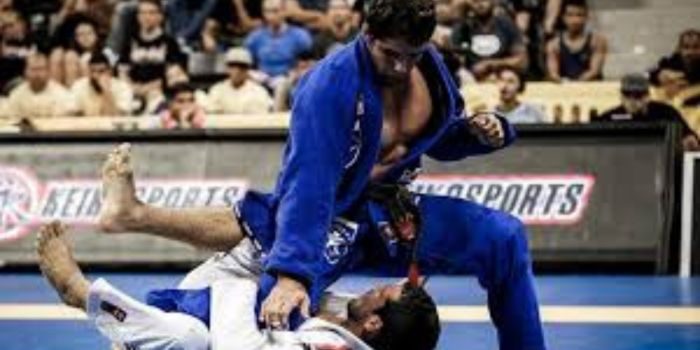When I first stepped onto the mat, I was immediately confronted with a world of complexity and nuance that I hadn’t anticipated. Gracie Jiu Jitsu and Brazilian Jiu Jitsu, often known simply as BJJ, are two martial arts that dominate this landscape. As I dove deeper into my training, the intricacies of each discipline Gracie Jiu Jitsu and Brazilian Jiu Jitsu began to unfold. What I learned was that while they share a common ancestry, there are distinct differences that set them apart.
Gracie Jiu Jitsu was developed as a modification of traditional Japanese Jiu Jitsu and Judo. It was crafted to suit the smaller, less physically imposing individual, emphasizing leverage and technique over brute strength. On the other hand, Brazilian Jiu Jitsu, which owes much to the Gracie family’s innovations, has evolved into a sport with a significant focus on ground fighting and submissions.
Understanding these two arts Gracie Jiu Jitsu and Brazilian Jiu Jitsu Requires more than just a cursory glance at their techniques and principles. It demands an appreciation of their history, their philosophies, and the subtle yet significant distinctions that have made them unique entities within the martial arts community.
The Origins and History of Gracie Jiu Jitsu and BJJ
The story of Gracie Jiu Jitsu begins with Mitsuyo Maeda, a Japanese Judo expert who immigrated to Brazil in the early 20th century. Maeda was a proponent of Judo founder Jigoro Kano’s philosophies and was instrumental in spreading the art around the globe. In Brazil, Maeda met Carlos Gracie, who would become one of his most prominent students.
Carlos Gracie, along with his brothers, especially Helio Gracie, adapted the techniques taught by Maeda to create a system that allowed a smaller person to defend themselves against a larger adversary. This system would eventually be known as Gracie Jiu Jitsu. The Gracie family’s approach to the art prioritized self-defense scenarios and real-world applicability.
As the Gracie family continued to refine their system, they began to teach and promote it within Brazil, which led to the formation of Brazilian Jiu Jitsu. The sport aspect of BJJ started to gain prominence as practitioners competed against each other to test their skills. The art spread internationally and has since become a staple in mixed martial arts (MMA) competitions.

Understanding the Belt Systems in Gracie Jiu Jitsu and BJJ
The belt system is a means of signifying a practitioner’s progress and expertise within a martial art. Both Gracie Jiu Jitsu and Brazilian Jiu Jitsu utilize a belt ranking system, but there are differences in how they are structured and what they emphasize.
In Gracie Jiu Jitsu, the belt system is relatively straightforward. It begins with the white belt, progresses through blue, purple, brown, and finally the black belt. Beyond black, there are coral and red belts, which denote the highest levels of knowledge and contribution to the art. The focus in Gracie Jiu Jitsu is on self-defense proficiency and the practical application of techniques in real situations.
Brazilian Jiu Jitsu’s belt system follows a similar path but includes additional stripes and degrees that can be awarded within each belt level. The progression from one belt to the next in BJJ is often tied to competition performance and the accumulation of points through participation in tournaments. This competitive focus is one of the key distinctions between the belt systems of the two arts.
Techniques and Principles in Gracie Jiu Jitsu vs. BJJ
Techniques are the building blocks of any martial art, and in Gracie Jiu Jitsu and Brazilian Jiu Jitsu, this is no different. However, the application and emphasis of these techniques can vary widely between the two styles.
Gracie Jiu Jitsu techniques are heavily centered around self-defense. They often start from a position where the practitioner is at a disadvantage, simulating a real-life altercation. The goal is to neutralize the threat as quickly and efficiently as possible, with a strong emphasis on maintaining a dominant position and using submissions to compel an attacker to surrender.
In contrast, Brazilian Jiu Jitsu techniques are more diverse, with a vast array of guards, sweeps, and submissions designed for sportive encounters. BJJ practitioners spend a considerable amount of time refining these techniques to gain points or achieve a submission in a competitive setting. The sportive nature of BJJ encourages innovation and the development of new techniques, making it a constantly evolving art.
Gracie Jiu Jitsu vs. BJJ: Similarities and Differences

Despite their common roots, Gracie Jiu Jitsu and Brazilian Jiu Jitsu have developed into distinct practices. They share a lineage, a focus on ground fighting, and the use of submissions to defeat an opponent, which creates a solid foundation of similarity between them.
However, the differences emerge in their philosophies and applications. Gracie Jiu Jitsu maintains a steadfast commitment to self-defense and the original principles of leverage and efficiency espoused by the Gracie family. It is often taught as a comprehensive system that includes not just fighting techniques but also elements of lifestyle and personal development.
Brazilian Jiu Jitsu, on the other hand, has embraced the competitive spirit. It thrives on the refinement of techniques for tournament settings and the sporting challenge of outmaneuvering an opponent. The dynamic nature of BJJ competition has led to a broader exploration of positions and strategies, making it an ever-changing landscape.
Gracie Jiu Jitsu vs. BJJ: Which is Right for You?
Choosing between Gracie Jiu Jitsu and Brazilian Jiu Jitsu depends largely on personal goals and interests. If one’s aim is to learn self-defense and to be prepared for real-life altercations, Gracie Jiu Jitsu may be the more suitable choice. Its curriculum is specifically designed to address common attacks and scenarios one might encounter outside the gym.
For those drawn to the sport of martial arts and the thrill of competition, Brazilian Jiu Jitsu offers a platform to test skills against other practitioners in a controlled environment. The sport aspect of BJJ can be highly motivating and provides a clear structure for progression and achievement.
Ultimately, the decision should be based on which art aligns more closely with an individual’s objectives and philosophy. Both styles offer a wealth of benefits, including physical fitness, mental discipline, and a strong sense of community among practitioners.
Famous Practitioners and Competitions in Gracie Jiu Jitsu and BJJ
The world of grappling sports is filled with legendary figures who have made significant contributions to both Gracie Jiu Jitsu and Brazilian Jiu Jitsu. From the Gracie family members like Helio and Rickson Gracie, who were instrumental in developing and popularizing Gracie Jiu Jitsu, to modern-day champions like Marcus “Buchecha” Almeida in BJJ, these individuals have showcased the effectiveness and technical depth of these arts.
Competitions play a central role in Brazilian Jiu Jitsu, with prestigious tournaments such as the World Jiu Jitsu Championship (commonly known as the Mundials), the Pan Jiu Jitsu Championship, and the ADCC Submission Wrestling World Championship. These events attract the best BJJ athletes from around the globe and have become the benchmark for excellence in the sport.
While Gracie Jiu Jitsu does not have a competitive scene as extensive as BJJ’s, there are still events that cater to its practitioners, emphasizing the self-defense aspects of the art. These tournaments often feature rulesets that reflect real-world combat situations and the application of Gracie Jiu Jitsu techniques.
The Evolution of Gracie Jiu Jitsu and BJJ in the World
The international spread of Gracie Jiu Jitsu and Brazilian Jiu Jitsu has been nothing short of phenomenal. What began as a family’s martial art in Brazil has exploded into a global phenomenon, with schools and academies established in nearly every corner of the world.
The evolution of these arts has been influenced by a variety of factors, including the rise of MMA, where BJJ’s ground fighting techniques have proven to be highly effective. The accessibility of online training resources and the establishment of international governing bodies have also played a role in standardizing practices and promoting the growth of both Gracie Jiu Jitsu and BJJ.
As these arts continue to evolve, they do so in a way that respects their roots while embracing new innovations. This balance between tradition and evolution is a testament to the adaptability and enduring relevance of Gracie Jiu Jitsu and Brazilian Jiu Jitsu in the world of martial arts.
Training and Learning Gracie Jiu Jitsu and BJJ
Training in either Gracie Jiu Jitsu or Brazilian Jiu Jitsu is a journey that can be both challenging and rewarding. For those starting in Gracie Jiu Jitsu, the focus is often on mastering self-defense techniques and understanding the principles of leverage and timing. Training sessions typically include a combination of drills, sparring (known as “rolling”), and scenario-based practice.
In Brazilian Jiu Jitsu, the training regimen is similar, but there is a heavier emphasis on sport-specific training. Practitioners spend a lot of time working on their guard game, passing strategies, and point-scoring positions. Rolling in BJJ classes is often geared towards preparing for competition, with an eye on strategy and endurance.
Regardless of the chosen art, the learning process is one of continuous improvement and personal growth. Both Gracie Jiu Jitsu and Brazilian Jiu Jitsu require dedication, patience, and a willingness to embrace the journey of learning one of the most complex and rewarding martial arts in existence.
Conclusion
In conclusion, the journey through Gracie Jiu Jitsu and Brazilian Jiu Jitsu is a deeply personal one that requires introspection about one’s goals and aspirations. Whether it’s the self-defense focus of Gracie Jiu Jitsu or the competitive edge of BJJ, each art offers a unique path to personal growth and understanding.My experience has taught me that the choice between these two incredible martial arts is not about which is superior, but rather which is more suited to my individual needs and lifestyle. I encourage anyone interested in exploring the world of grappling to try both and see which resonates more deeply with their personal philosophy and objectives.
FAQ's
Is Gracie and BJJ the same?
Gracie Jiu Jitsu and Brazilian Jiu Jitsu share a common history, but they are not the same. Gracie Jiu Jitsu focuses more on self-defense, while BJJ has a significant sport component.
What does Gracie mean in BJJ?
“Gracie” refers to the Gracie family, who were pivotal in developing the martial art known as Gracie Jiu Jitsu, which played a foundational role in the evolution of Brazilian Jiu Jitsu.
What is the difference between BJJ and GJJ?
The main difference is that BJJ often emphasizes competition and sport, with a broader range of techniques for tournaments, whereas GJJ (Gracie Jiu Jitsu) places a greater emphasis on self-defense and real-world application.
Can BJJ win a street fight?
BJJ can be effective in a street fight, particularly its ground control and submission techniques. However, the unpredictable nature of street altercations means that no martial art can guarantee victory.
Can a blue belt beat a normal person?
A BJJ blue belt typically has a higher level of grappling knowledge and skill than an untrained person and could potentially have an advantage in a physical confrontation. However, each situation is unique, and many variables could affect the outcome.
Feel free to comment down there,what you think about this blog.I would be happy.
- #bjj vs gracie jiu jitsu
- #difference between jiu jitsu and bjj
- #does jiu jitsu have striking
- #gracie bjj belt system
- #gracie jiu jitsu belts
- #gracie jiu jitsu ranks
- #gracie jiu jitsu vs
- #gracie jiu jitsu vs bjj
- #gracie vs kimura
- #jiu jitsu vs the world
- #what does bjj mean
- #what is gracie jiu jitsu
- #whats bjj


